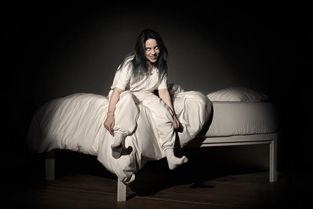Views expressed in opinion columns are the author’s own.
Seventeen-year-old Billie Eilish is the first Gen Z superstar. As of Wednesday, four of the top 10 most-streamed songs on Spotify are from her new album, WHEN WE ALL FALL ASLEEP, WHERE DO WE GO? Eilish’s sound is creepy, full of deep, shaky bass and Yeezus-style punctuating screams. The horror aesthetic shows up in her music videos too. In “you should see me in a crown,” for instance, a spider infamously crawls out of her mouth, while the video for “bury a friend” features syringes, monsters under the bed and visual references to The Shining.
It’s not just Eilish; horror seems to be the genre of the moment. One of the most critically acclaimed films of 2018 was Ari Aster’s brutal Hereditary, which featured ghosts, bodily mutilation, predatory relationships and even literal demons. First Reformed, another lauded film — initially released at the Venice International Film Festival in 2017, then to the American public in 2018 — might not be properly classified as horror, but it’s still pretty creepy and ends with a bodily mutilation scene.
What is it about this moment in history that’s brought horror to the forefront of popular entertainment? It’s not as if horror is popular because it’s new — the genre has been around for a long time. So why the resurgence?
In his book The Weird and The Eerie, literary critic Mark Fisher discusses two frequent sensations in works of horror. There’s “the weird,” which is “the presence of that which does not belong.” Then there’s “the eerie,” which is “a failure of absence or … a failure of presence.” Something is weird when it doesn’t follow the rules of the world as we understand them. Something is eerie when we expect it won’t be where it is, or expect something else to be there and can’t find it. Fisher gives the example of a bird cry, which is eerie when it seems to mean something, as if the bird had human-like intelligence. Since birds are not human, it’s eerie for them to behave as if they are.
Perhaps, then, horror is so popular now because the world we live in feels eerie, in Fisher’s sense of the word. The world seems to be dominated by unseen forces beyond our control. Capital has its own terrible logic that rules our lives, even without anyone designing it to do so. Yet what even is capital? It’s not as if shares of pharmaceutical companies are coming to life and forcing people to use opioids, nor is it as if the owners of those shares are doing so. It’s an invisible force, working through us and the laws passed by people many of us voted for, all without any of us trying to make it happen. In the sense that capital owns us, it’s as if we are possessed by capital.
As the first American generation to grow up after millennials began to realize the American dream was a lie, Gen Z is a step further down the alienation trail. The lyrics to “bury a friend” use economic language for self-evaluation almost immediately: “What is it exactly/ You’re payin’? Is the amount cleanin’ you out? Am I satisfactory?”
In The Holy Family, Karl Marx and Friedrich Engels write that “[T]he fully formed proletariat represents … the completed abstraction from everything human, even from the appearance of being human … it cannot liberate itself without destroying its own living conditions.” That’s Billie Eilish: the child who has become the monster under the bed — her eyes turned entirely black, her hair dyed an unnatural light purple — on the verge of self-destruction, pumped full of needles by forces visible only in their actions.
John-Paul Teti is a senior computer science major. He can be reached at jp@jpteti.com.



